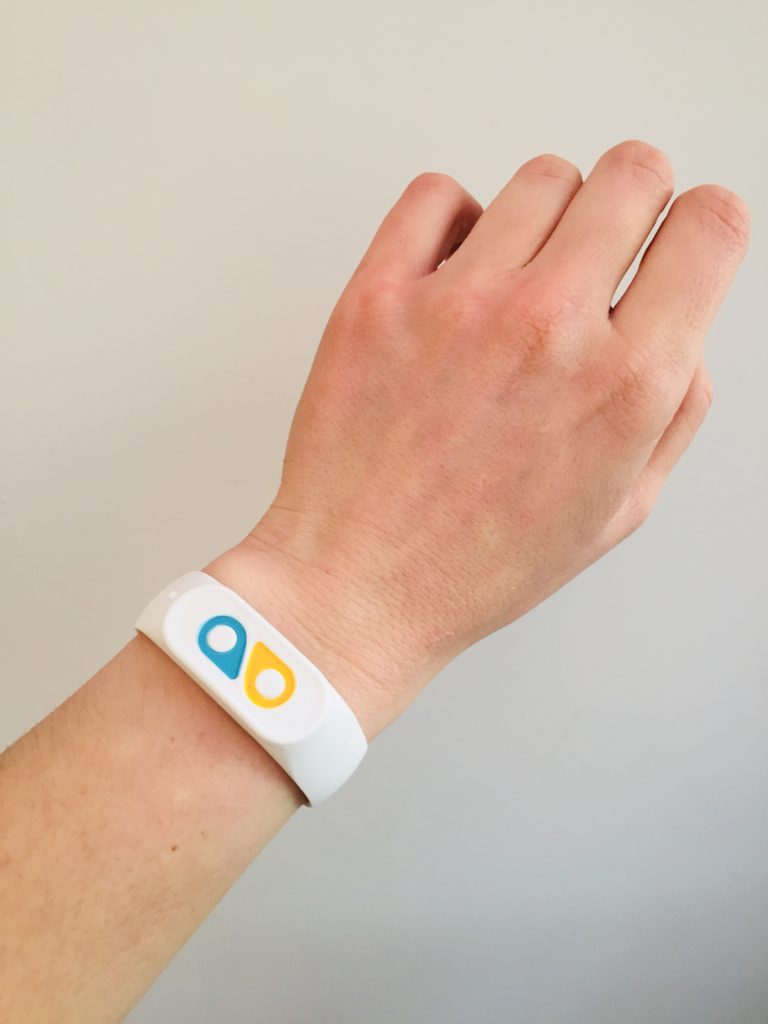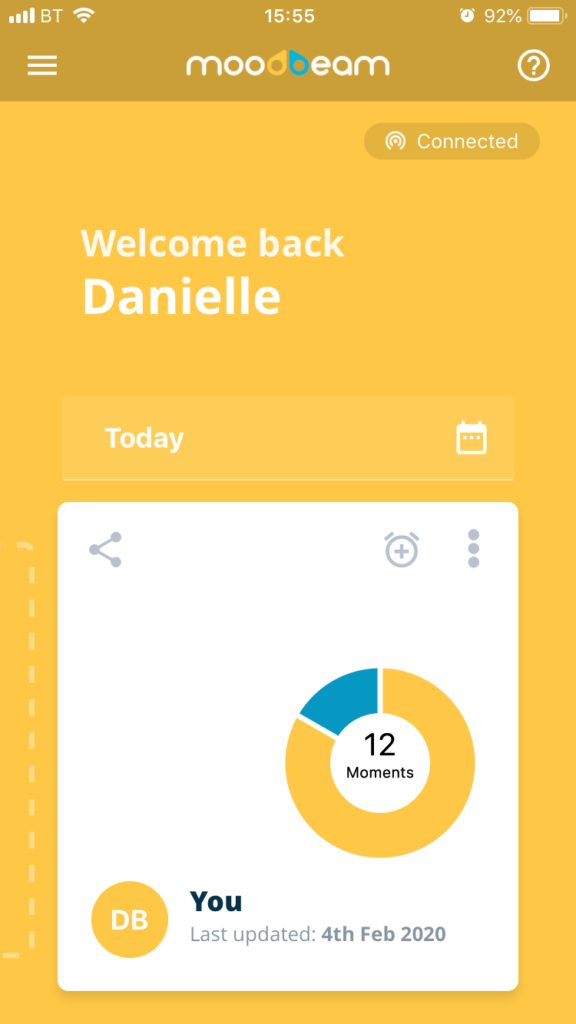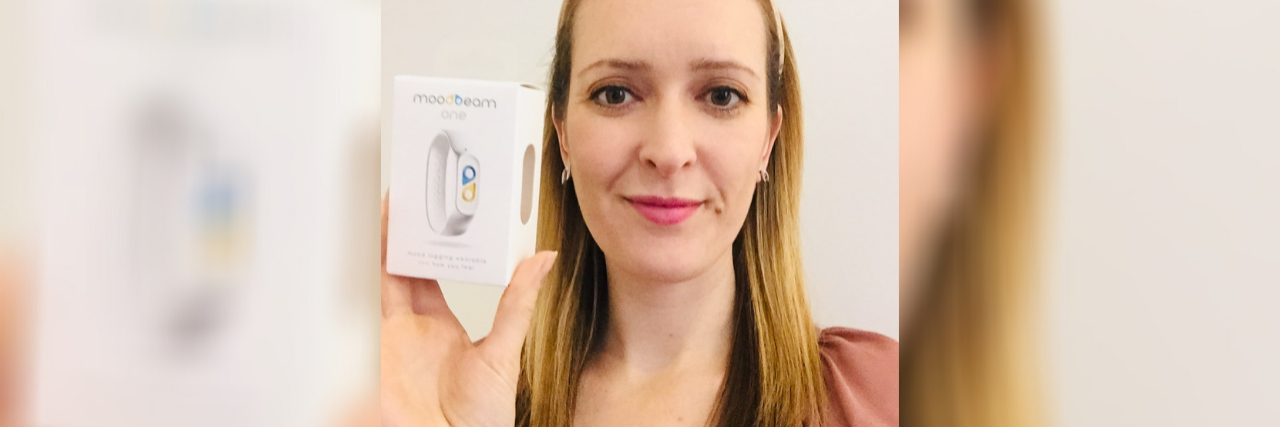What It’s Like To Use a Mood-Tracker Device To Monitor Mental Health
Editor's Note
Disclaimer: The contributor of this article is an ambassador for Moonbeam. She has not been paid for this article by Moonbeam or The Mighty, but she received a Moonbeam One band to try out.
We know mental health is something we ought to talk about more.
These conversations shouldn’t just be reserved for times of crisis either — for when stuff has spiraled out of control, when we need to reach out and ask for help.
Instead, it needs to be an ongoing conversation. A regular check-in where we explore how we are doing, where we need extra support and where we’re doing really well. Acknowledging this enables us to stay healthy and puts us in control of our thoughts and feelings, rather than the other way around. It can prevent little niggles from escalating into more serious issues, and ensure we have a strong support network around us.
“How are you?” is a question we get asked all the time. And it’s absolutely meaningless.
It’s a platitude, a polite conversation starter, and we stop paying attention to it.
But we shouldn’t.
The reason is simple. If we don’t understand how we are and what is making us feel happy or unhappy, then it’s very difficult to improve things. Our happiness levels fluctuate depending on our circumstances, tiredness levels, stressors and a whole range of other factors. We won’t be happy all the time. There will be days when it comes easily and days where it’s as difficult as nailing jelly to a tree.
It’s important to get a really good understanding of yourself in order to properly look after yourself, so I was super excited about trying out the new Moodbeam One. The wearable device captures our emotions, acting as a thought provoker, conversation starter and well-being manager. It arrived a month ago at the time of writing this piece and has been on my wrist ever since.

So, initial impressions…?
The set-up was nice and easy, taking about ten minutes to sort out. It’s comfortable to wear and it looks pretty sleek. A white wristband with two buttons — yellow for positive emotions and blue for negative ones. Press the button throughout the day to log your mood and the app will do the rest, giving you a visual snapshot of your mood.
You can choose what the buttons mean to you. For me yellow signifies happiness, and blue is for negative emotions, more specifically anxiety, fear and dread. This makes the trends more meaningful to your personal situation. To give this a bit more context, there is the option to add details in the app to explain why you pressed yellow or blue. I found this really helpful when analyzing it later.
I like patterns. I journal, which helps me make sense of my thoughts, feelings and behaviors. If I notice a pattern I can figure out the reason behind it and then take action. Straight away, I could see how a mood tracker device would be useful. I’ve never managed to reliably track my emotional state before and watching it evolve in real-time in the app would give me some really helpful data to work with.
The theory made sense. As for the practice?
The data it captured helped me uncover blind spots that took much longer when I put pen to paper. I could look at my day and identify what was triggering negative emotions, but also what was causing the positives. From the data I’ve collected I’ve already been able to adapt my sleep routine and also managed to have some really in-depth conversations about where I am.

Sometimes I find it difficult to make sense of emotions. They can be chaotic and messy, and trying to unravel them is hard. Feelings are a fluffy measurement and mean different things to different people, but the Moodbeam acts as a great conversation starter and has allowed me to better explain how I am doing to others.
A huge benefit I wasn’t expecting was that it’s really helped me check in with myself more regularly. Rather than diary dumping at the end of the day, I spend more time throughout the day casting a magnifying glass over how I’m doing.
Before I tried the Moodbeam, I thought I was pretty good at this. The problem is that life happens. I get busy. My mind jumps from one project to the next meeting, to what I’m going to be having for dinner without taking a break. With a mood tracker on my wrist, I now take a few moments out to explore how I am feeling at regular intervals during the day. This offers me more clarity and a greater perspective and lets me know that I’m staying on track. A really handy feature is the prompt that gives you a little nudge at certain times of the day. This reminds you to check in periodically and allows you to build up a more consistent picture over time rather than just pressing yellow or blue when you recognize a particular feeling.
One month of tracking my mood and I’m really looking forward to the next. It’s a useful device and I’m sure there are plenty more benefits I’m yet to uncover.
Follow this journey on the contributor’s website.

